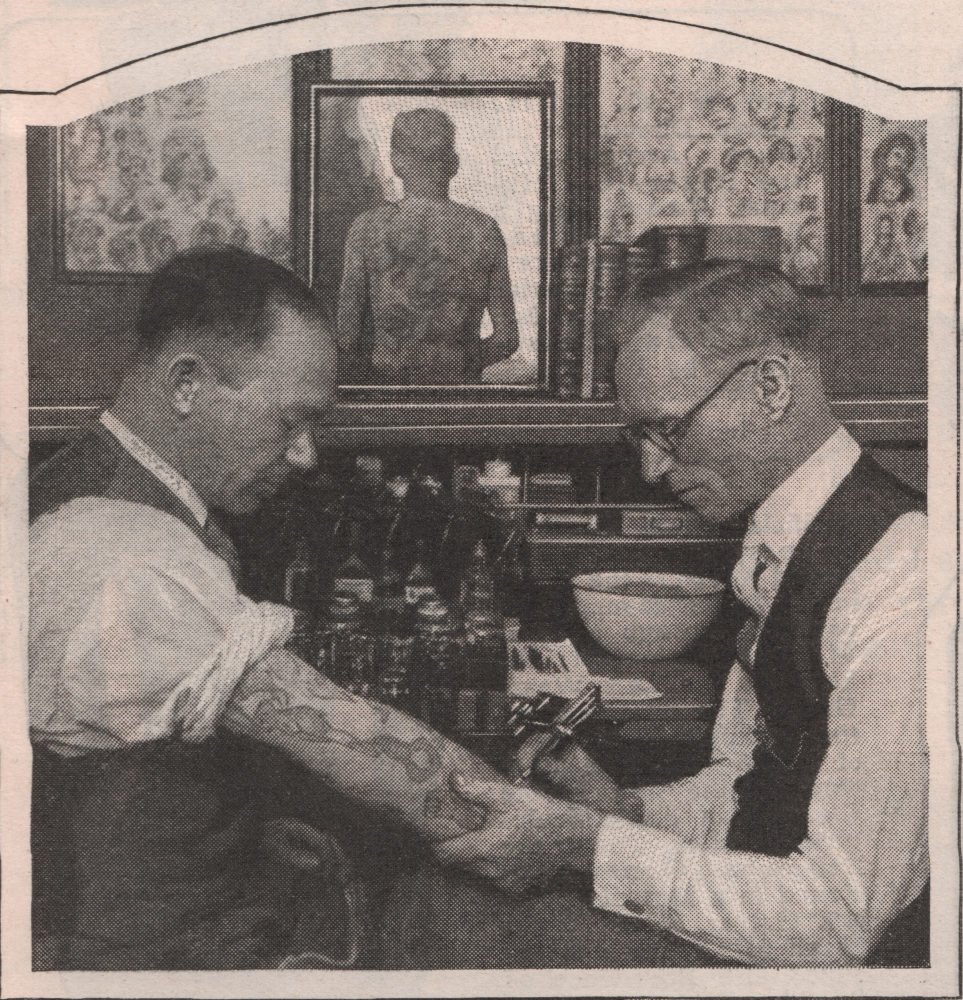
Harry Lawson. August 1927 issue of Popular Mechanics. Collection of Carmen Nyssen.
Harry Vivian Lawson
Researched/Written by Carmen Nyssen
Born: October 23, 1882 Barossa, Australia
Died: January 20, 1950 Los Angeles, California
Burial: Westminster Memorial Park, Los Angeles, CA, Garden 16 Sec 556 Sp 2
Australian born, Harry Lawson (birth name Hurtle Vivian Lawson) was a major player in American tattooing, with a varied and exciting history. Before making his way to the United States, Lawson had served in the Boer War in South Africa (1899-1902) and resided in various Australian cities. Whether he first encountered tattooing then, or later working aboard sailing vessels as he once claimed, is unclear. But he was immersed in the trade forevermore after landing on American soil, and he crossed paths with numerous tattooers throughout his over forty-year long career.
Harry Lawson’s Early Tattoo Days
Upon his arrival in the U.S. in 1906, Lawson settled in Philadelphia, where he laid the foundation for a fruitful career—tattooing, networking with fellow tattooers, and adding to his own skin decor. Within his several-year stay in the area, he had revered longstanding resident tattooer Harry C. “Buckie” Buchanan adorn his back with a stunning ‘Christ head’ design (just as Buckie had done on Charlie Barrs). Eventually, he had himself fully covered in tattoos and took his talents on the road. Around 1911, he hit the dime show-carnival circuit exhibiting and tattooing around the country with venues such as Sells-Floto Shows. By 1914, he was on display at Los Angeles’ Clark & Snow Museum, where he possibly encountered fellow tattooer Red Gibbons, also one of the attractions there early that year.
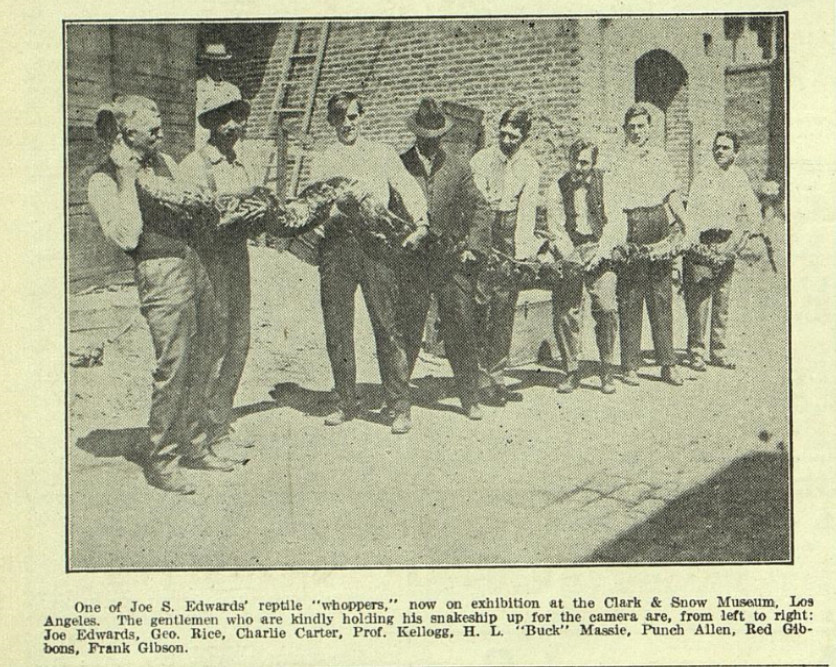
Red Gibbons holding snake at Clark & Snow’s Los Angeles ‘store front museum.’ Second from right, tattoo artist Red Gibbons holding “monster” snake. Billboard Magazine. 1914 Mar 7, pg. 40.
—
While in Los Angeles, he met and married Anna Mae Gibson, who also performed as a tattooed attraction. Though they divorced shortly after, she was possibly the tattooed lady Owen Jensen saw on stage, along with Lawson, in a Detroit museum during his days working as a machinist for Jesse F. Barber, c. 1914-1915. As Jensen described the experience in a 1970s letter to Paul Rogers:
“Long about this time a museum or store show opened up on Monroe Avenue, and Harry Lawson was the tattooed man for some time. They also had a tattooed lady, last name was Gibson.”
1914 was a year that found Lawson on the move. He also briefly operated a tattoo stand in El Paso, Texas (Tattooer William H. Stager, who Lawson likely knew from Los Angeles was also in the city).
1914 Nov 7 Billboard pg. 23
Jas. Harrington Jr., the tattooer has just arrived in El Paso, Tex., to open a shop at 206 Broadway, Harry Lawson’s old stand. Jim makes tattoo man no. 2 for this border town as W.H. Stiger [Stager] is also there, having come from California.
Harry Lawson’s Boston Tattoo Days
A big break in Lawson’s early career was his 1914 stint in Boston with the era’s most successful tattoo shop-tattoo supply operator—Barnum & Bailey’s one-time tattooed man Frank Howard (real name Franklin Howard Packard, as identified by my research).
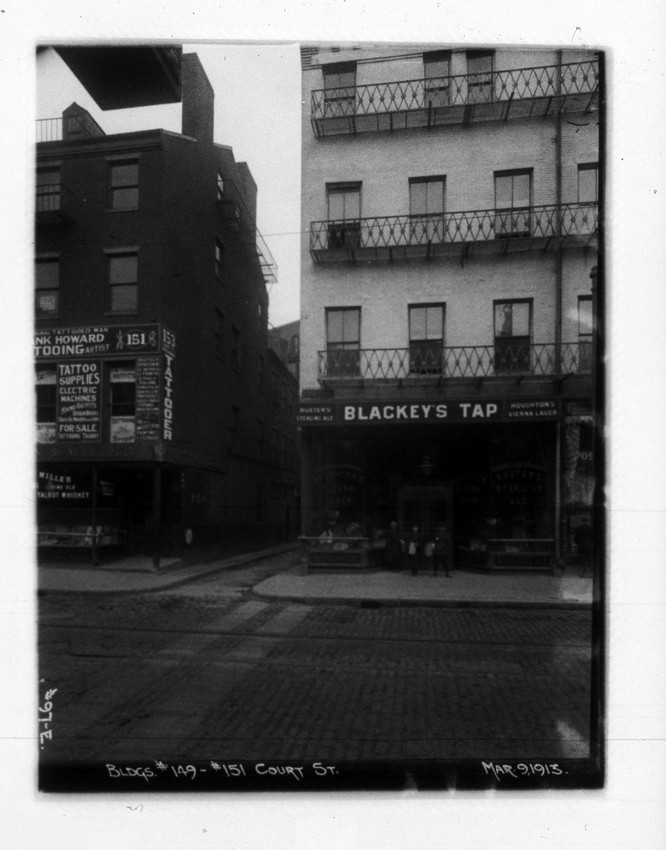
Frank Howard’s Boston Tattoo Shop c. 1913. Courtesy Historic New England. Boston Transit Archive, 1895-1960s.
—
The partnership lasted only a few months, however, ending with Lawson’s betrayal. In January of 1915, temptation got the better of Lawson. He and his new bride, Esther Roderick, who he was in the process of tattooing for exhibition, stole six of Howard’s tattoo machines and a book of designs and dashed for the Canadian border. (For the full story see Carmen Forquer Nyssen’s research in the Tattoo Archive’s ©2014 Life & Times Frank and Annie Howard booklet).
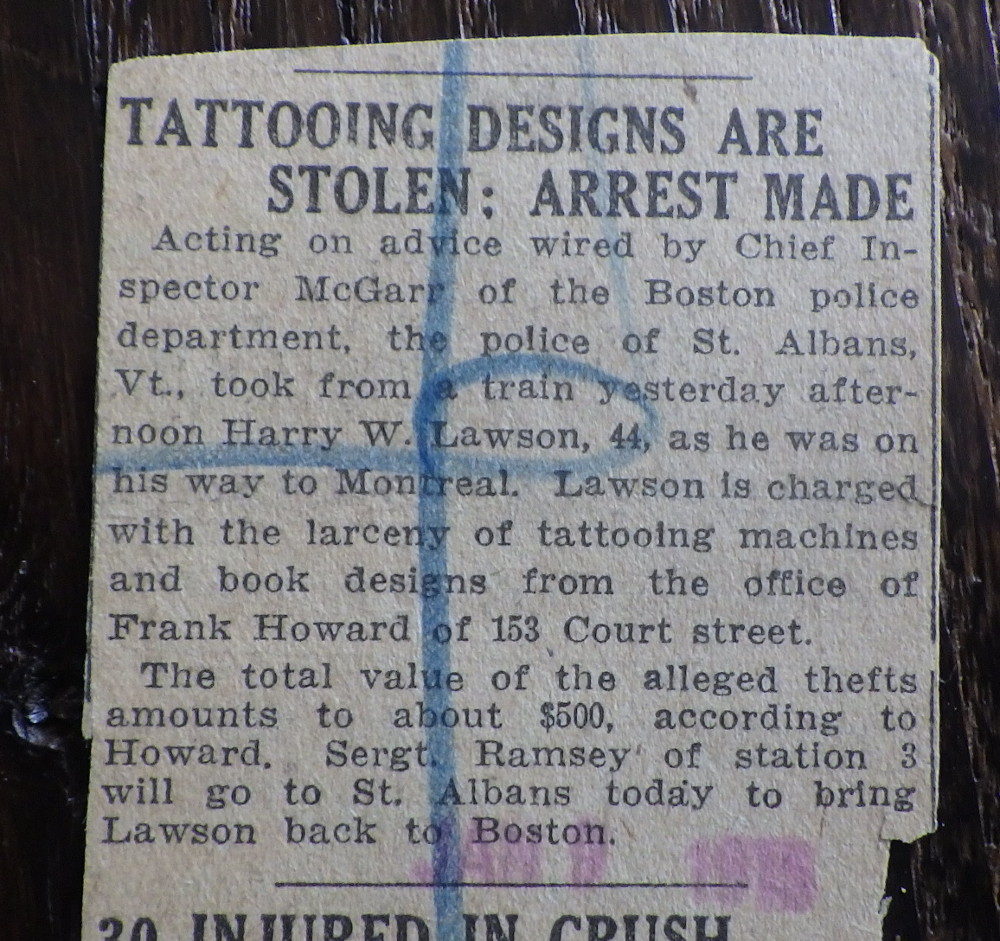
Clipping about Harry Lawson stealing Frank Howard’s tattoo machines and designs. Collection of Carmen Nyssen
—
Harry Lawson’s Detroit Tattoo Days
Despite being arrested for his misdeed, it seems Lawson didn’t take much heat for the Boston incident. By April, he was back in action, in Detroit. Here, he married yet again to Gladys Brown, in April of 1915, earning himself a humorous title on his business card: “the man with the marrying reputation.” A year later, though, he finally married the woman who stayed by his side the rest of his life, Julene Blackwell.
1916 Jan 1 Billboard pg. 25
“Prof. Harry Lawson had some cards printed recently, and the printer must have gotten the order mixed with a wedding invitation, for the cards came back thus” “Prof. Harry Lawson, the Man With the Marrying Reputation.”
By 1917, he had also switched gears in business and tried his luck in the dime museum game. A natural showman, he was running two “high class” ‘Palace of Wonders’ by March of that year. Packed with a stunning spectacle of ‘freaks’—from tattooed people to boxing girls to Hindu wand workers and handcuff kings—Lawson’s amusement houses were a big draw for thrill-seekers wandering the streets of Detroit’s Cadillac Square theatre-entertainment district (one of his museums stood next to the popular Family Theatre).
Lawson’s ‘Palace of Wonder’ location, left side of photo. Building under the Budweiser sign.
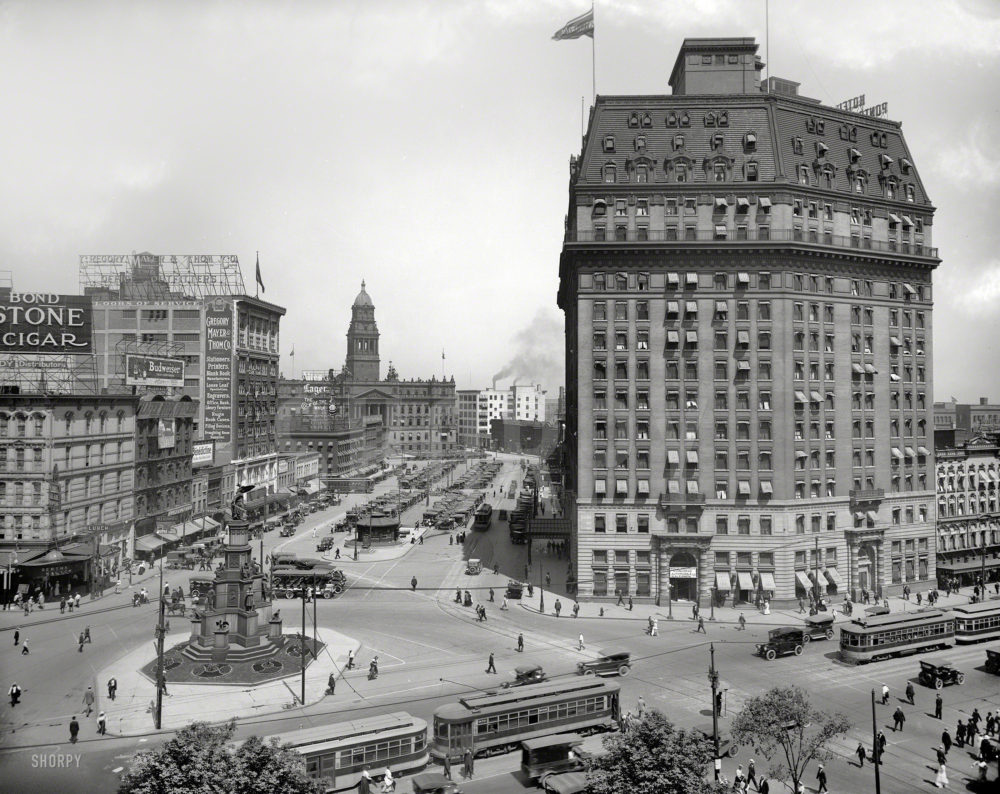
Detroit’s Cadillac Square, location of Harry Lawson’s 1917 Palace of Wonders Dime Museum. Courtesy of www.shorpy.com
—
Harry V. Lawson’s Palace of Wonders Venue
1917 Jan 20 Billboard pg. 25
“If you want to hear something funny-real funny-get Harry Lawson to tell you how he recovered the lost snake in the store show.”1917 Feb 10 Billboard pg. 65
Wanted For Lawson’s Palace of Wonders-Freaks, curiosities, illusionist, Fat Girl, Sword Swallower, Tattooed Man, Magician or anything suitable for high-class museum. Long engagement. Send photos, lowest salary, state all in first letter. Address all mail to Harry Lawson, 15 Cadillac Square, Detroit, Mich.1917 Mar 24 Billboard pg. 98
Lawson’s Palace of Wonders No 1. and No. 2 Wants:
Freaks, Tattooed People, Fat Girl, Boxing Girls, Wrestling Girls, Lady Bag Puncher, Curiosities, Talkers and Openers, Palmist, and Hindu Wand Worker. Handcuff King. Lady with den of large snakes. Oriental Dancer, anything suitable for high-class Museum. Long engagement. Send photos, positively state salary and all in first letter if you want reply. Address all mail to: Harry Lawson, 15 Cadillac Sq. Detroit, Mich.” [similar ad March 3 pg. 73]1917 Mar 31 Billboard pg 32
Business has been rushing around the Palace of Wonders for Harry Lawson in Detroit. For Harry comes out with the startling statement that he will put on a Palace of wonders No. 2 pretty soon, and add another back room for the Bedouins to warm their shins.”
Harry Lawson’s Norfolk Tattoo Days
As exciting as his museum venture was, Lawson soon cast-off show business for his true forte when the U.S. entered World War I in April of 1917 and inspired a wave of serviceman getting patriotic emblems etched in their skin. Along with a slew of like-minded tattooers, Lawson headed for Navy town Norfolk, Virginia eager to capitalize on the business boom. Set up on the Main Street sailor’s haven stretch—teeming with burlesque houses, taverns, and tattoo parlors—he kept busy decorating the arms and chests of Uncle Sam’s men stationed at the nearby Naval base, while also operating a flourishing tattoo supply business.
Harry Lawson’s Main Street Tattoo Days
Never one to stay complacent, in the wake of slowing tattoo business in the post-war era, Lawson set his stakes elsewhere with ambitious plans in mind. After a short stop in San Antonio in 1922, where he took over William Grimshaw’s 420 1/2 W. Houston tattoo shop, he made Los Angeles his home and established himself in a posh three-room tattoo shop on South Main Street (See above 1927 photo from Popular Mechanics). In these swanky digs—consisting of a reception room, “operating” room, and bathroom—he catered to the latest fad of ladies desiring permanent blush and lipstick tattooed on their faces. This new facet of business saw his name in newspaper headlines more than once during the 1920s.
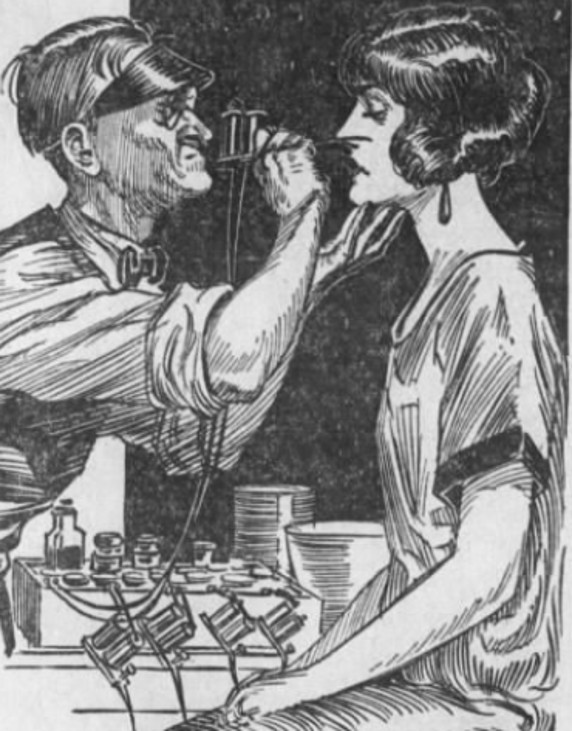
Illustration of Harry Lawson tattooing blush on a lady. Los Angeles Times. March 23, 1924. pg. 47
—
By the 1920s era, Lawson’s career in tattooing was well-solidified. He enjoyed a decade prospering in Los Angeles, with occasional jaunts to Honolulu, where he left a lasting mark on the work of local tattooers. During World War II, Honolulu tattooers, Bob Miller and sons, were still touting the “Harry Lawson Methods” of tattooing they had picked up from his island visits.
In the early 1930s, when the Depression set in and business faded away, he moved to San Diego for another ten years, in which time he partnered with Owen Jensen at 849 4th Avenue (c. 1939-1941). In 1941, famed World War II journalist Ernie Pyle visited Lawson and Jensen at this location and brought their tattoo careers to life for thousands of riveted readers in his national newspaper column.
—
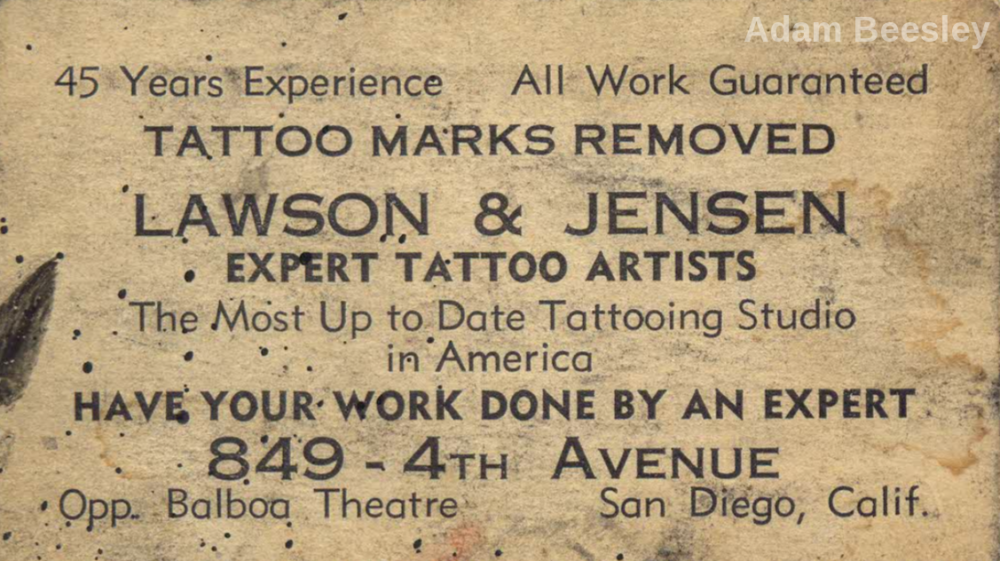
Owen Jensen & Harry Lawson tattoo business card. Collection of Adam Beesley.
—
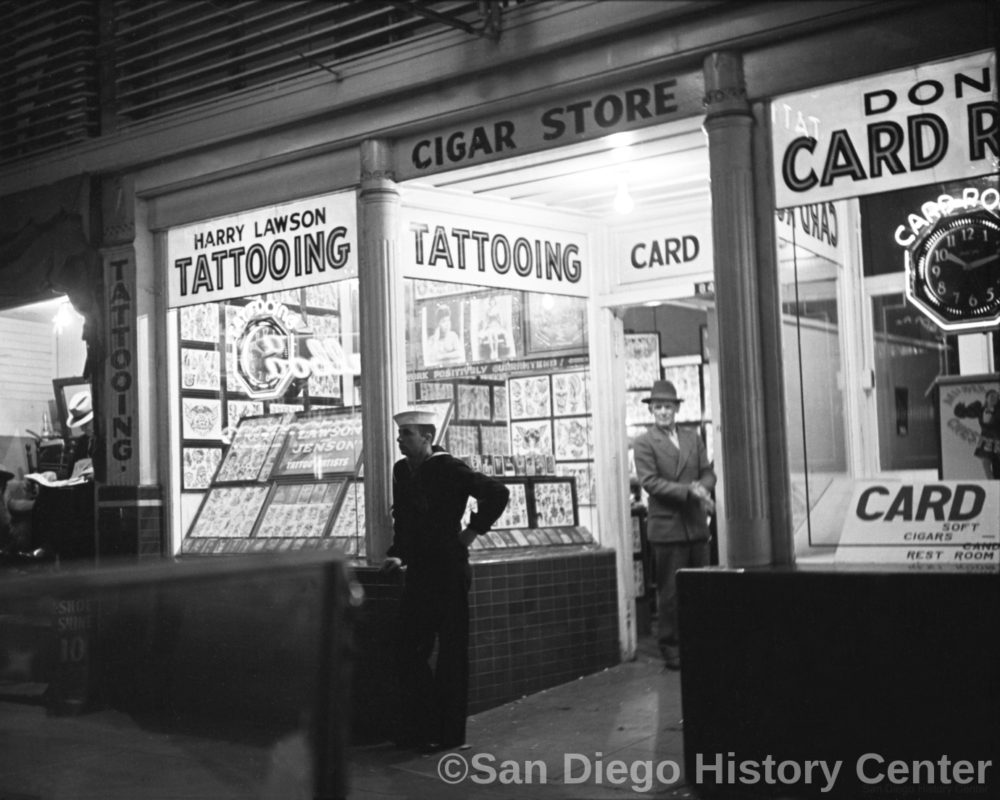
Harry Lawson’s San Diego Tattoo Shop, 4th Ave. Courtesy San Diego History Center. (Licensed. Used with permission)
—
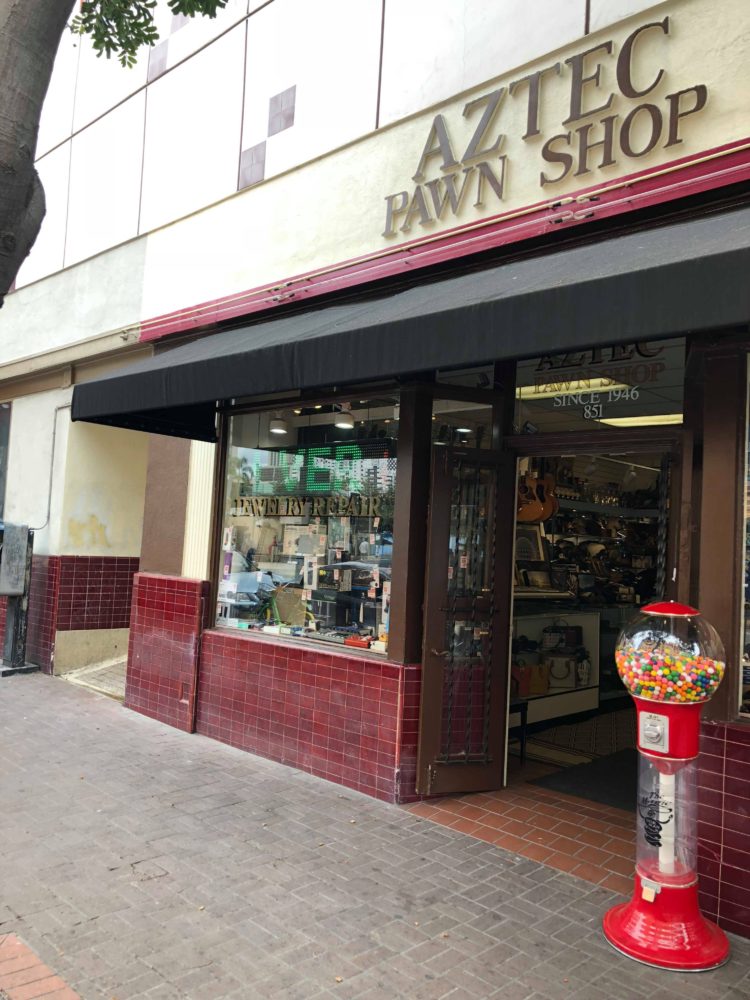
Harry Lawson & Owen Jensen’s San Diego tattoo shop as it looks today.
—
1943 found Lawson tattooing again on Los Angeles’ South Main Street, and soon after, on the Long Beach Pike in his very last shop, where he remained until his death in 1950.

South Main Street Los Angeles Tattoo Shops of Harry Lawson, Pat Dimidies, Duffy, 1943
—
Harry V. Lawson’s final resting place
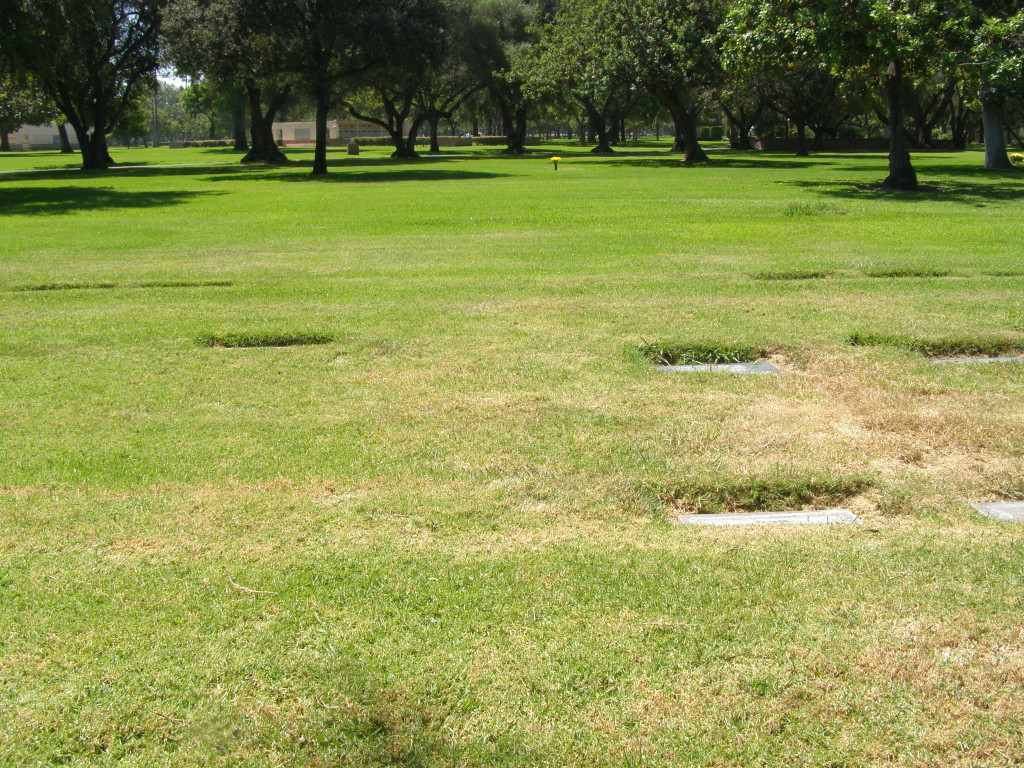
Harry V. Lawson’s resting place. No grave marker. Westminster Memorial Park, Los Angeles. Photo by Carmen Nyssen c. 2010
Notes:
A huge thank you to Debra Yarian (via Shane Enholm) for sharing the Owen Jensen letter written to Paul Rogers.
Also see Tattoo Archive biography on Sailor Charlie Barrs, which includes a photo of Barrs’ backpiece and handwritten notes on the reverse side by Owen Jensen stating that both Barrs and Harry Lawson’s Christ head back pieces were executed by Buckie of Philadelphia. Jensen mentions the same in his letter to Rogers.
For more of Carmen Forquer Nyssen’s Harry Lawson research see Buzzworthy Tattoo History articles:
Harry V. Lawson’s Norfolk Tattoo Shop (with Lew the Jew Alberts aka Albert Kurzman, et al)
A Roundtrip Ticket To Tattoo: From So. Cal to Honolulu
1943 S. Main Street Tattooers: Harry Lawson, Pat Dimides, Duffy
Tattoo Time Capsule at the Henry Ford
Published (March 30, 2018 @ 00:01:41)
